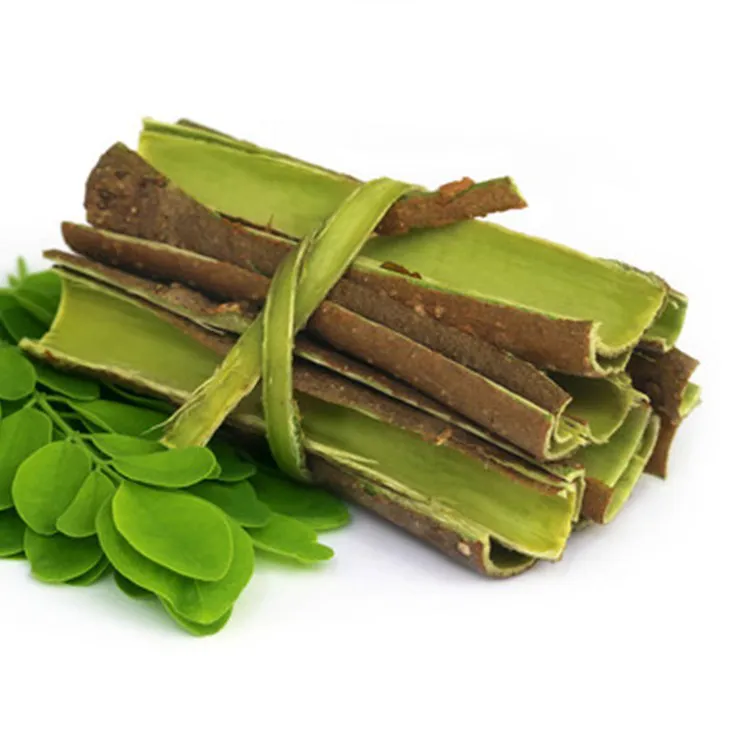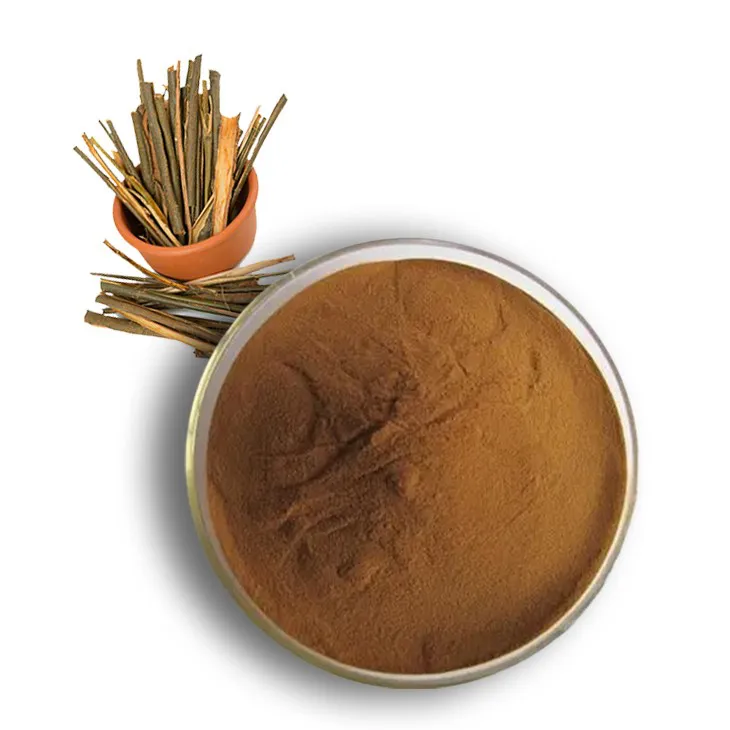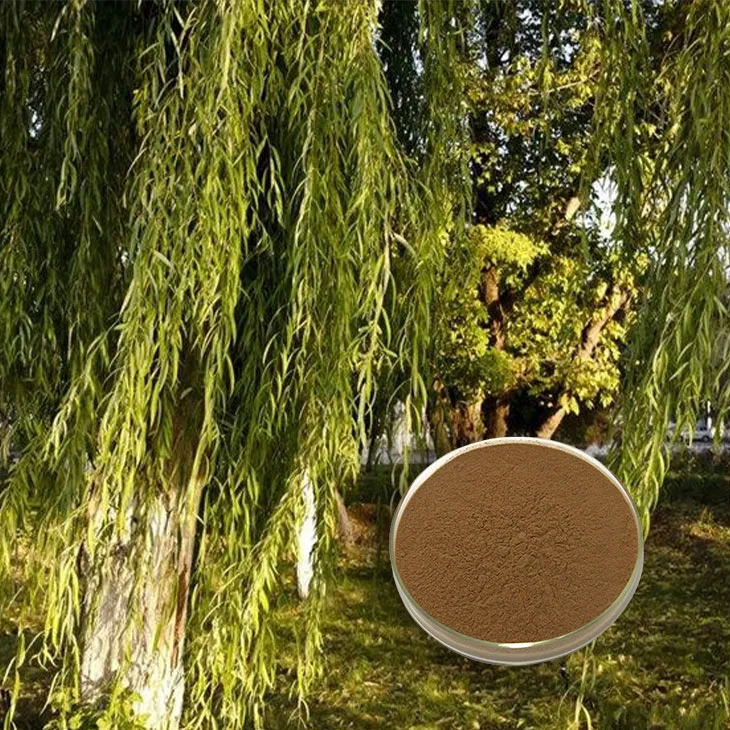- 0086-571-85302990
- sales@greenskybio.com
How to make powder from white willow bark extract.
2024-11-29

1. Introduction to White Willow Bark Extract
White willow bark has been used for centuries in traditional medicine. The active ingredient in white willow bark is salicin, which is related to aspirin. White Willow Bark Extract is known for its anti - inflammatory, analgesic (pain - relieving), and antipyretic (fever - reducing) properties. It is often used as a natural alternative to synthetic drugs in various natural remedies.

2. Sourcing the White Willow Bark
2.1. Ethical and Legal Considerations
Before sourcing white willow bark, it is crucial to consider ethical and legal aspects. In many areas, it is illegal to harvest white willow bark from wild trees without proper permission. It is best to obtain the bark from sustainable sources such as:- Organic farms that cultivate white willow trees specifically for bark extraction.
- Reputable herbal suppliers who can provide documentation of the origin of the bark.
2.2. Identifying the Right White Willow
Not all willow species are suitable for bark extraction. The white willow (Salix alba) is the most commonly used. When identifying white willow, look for the following characteristics:- It is a deciduous tree with a slender trunk and branches.
- The bark is usually a grayish - white color and has a smooth texture when young, becoming more fissured with age.
- The leaves are long and narrow, with a silvery - green color on the underside.

3. Preparing the Bark for Extraction
3.1. Harvesting the Bark
If you are harvesting from a sustainable source, the best time to harvest white willow bark is in the spring or early summer. Use a sharp knife or pruning shears to carefully remove the outer bark in small strips. Avoid taking too much bark from a single tree to prevent damage. For example, do not remove more than one - third of the bark circumference of a young tree.
3.2. Cleaning the Bark
Once the bark is harvested, it needs to be cleaned thoroughly. Remove any dirt, debris, or insects from the bark. You can do this by gently brushing the bark with a soft - bristled brush or by rinsing it briefly in cool water. Make sure the bark is completely dry before proceeding to the next step.
4. Extracting the Active Compounds
4.1. Maceration Method
One of the simplest ways to extract the active compounds from white willow bark is the maceration method.- Chop the cleaned white willow bark into small pieces. The smaller the pieces, the more surface area is exposed for extraction.
- Place the chopped bark in a glass jar.
- Pour a suitable solvent over the bark. Ethanol or vodka (with a high alcohol content) is often used as solvents. Use enough solvent to completely cover the bark pieces.
- Seal the jar tightly and place it in a cool, dark place for about 2 - 4 weeks. Shake the jar gently every few days to ensure proper mixing.
4.2. Decoction Method
Another method is the decoction method, which is more suitable for those who prefer a non - alcoholic extract.- Chop the white willow bark into small pieces.
- Place the bark pieces in a pot with a lid.
- Add water to the pot. Use about 10 - 20 times the volume of water compared to the bark. For example, if you have 100 grams of bark, add 1 - 2 liters of water.
- Bring the water to a boil, then reduce the heat and let it simmer for about 30 minutes to 1 hour.
- Remove the pot from the heat and let it cool. Strain the liquid through a cheesecloth or fine - mesh sieve to separate the liquid extract from the bark residue.

5. Concentrating the Extract
5.1. Evaporation for Alcohol - Based Extracts
If you used the maceration method with an alcohol - based solvent, you need to concentrate the extract.- Pour the alcohol - based extract into a shallow dish or evaporating basin.
- Place the dish in a well - ventilated area or under a fume hood. Allow the alcohol to evaporate slowly at room temperature. This process may take several hours to a few days depending on the volume of the extract.
- As the alcohol evaporates, the extract will become more concentrated. Stir the extract gently from time to time to ensure even evaporation.
5.2. Reduction for Water - Based Extracts
For water - based extracts obtained from the decoction method, you can concentrate the extract by reducing the volume.- Pour the water - based extract back into a pot.
- Heat the pot over low heat and let the water evaporate slowly. Stir constantly to prevent burning. Continue this process until the extract reaches the desired concentration. This may be when the volume has been reduced to about one - fifth or one - tenth of the original volume.
6. Drying the Concentrated Extract
6.1. Using a Dehydrator
A dehydrator is an effective tool for drying the concentrated extract.- Spread the concentrated extract evenly on the dehydrator trays. Make sure it is in a thin layer to ensure even drying.
- Set the dehydrator to a low temperature, around 40 - 50°C (104 - 122°F).
- Let the extract dry in the dehydrator for several hours to overnight. Check the progress regularly. The extract is dry when it becomes a brittle, solid mass.
6.2. Air Drying
If you don't have a dehydrator, air drying is also an option.- Place the concentrated extract on a clean, dry surface such as a baking sheet or a piece of parchment paper.
- Put the extract in a well - ventilated area away from direct sunlight. It may take several days to a week or more for the extract to dry completely depending on the humidity and temperature of the environment.
7. Grinding the Dried Extract into Powder
7.1. Using a Mortar and Pestle
A mortar and pestle can be used for small - scale powder production.- Place the dried extract in the mortar.
- Use the pestle to gently crush the extract. Start with light pressure and gradually increase the force as the extract breaks down into smaller pieces.
- Continue grinding until you achieve a fine powder. This may take some time, especially if the extract is very hard.
7.2. Using a Coffee Grinder or Blender
For larger quantities, a coffee grinder or blender can be more efficient.- Break the dried extract into smaller pieces if it is in a large chunk.
- Place the pieces in the coffee grinder or blender.
- Grind the extract in short bursts to avoid overheating. Check the texture regularly and continue grinding until you get a fine powder.
8. Storing the White Willow Bark Extract Powder
8.1. Choosing the Right Container
It is important to store the powder in an appropriate container.- Use an airtight container such as a glass jar with a tight - fitting lid. This will prevent moisture, air, and light from degrading the powder.
- Avoid using plastic containers as some plastics may interact with the active compounds in the powder over time.
8.2. Storage Conditions
Store the powder in a cool, dry, and dark place.- A pantry or a cupboard away from heat sources such as stoves or radiators is ideal.
- Proper storage can extend the shelf life of the white willow bark extract powder, which can typically last for one to two years under these conditions.
9. Significance and Uses of White Willow Bark Extract Powder
9.1. In Natural Remedies
White willow bark extract powder is widely used in natural remedies.- It can be used to relieve pain, such as headaches, muscle aches, and joint pain. It works in a similar way to aspirin by inhibiting the production of prostaglandins, which are involved in the pain and inflammation response.
- For reducing fever, it can be taken as a natural alternative to synthetic fever - reducing medications. However, it should be used with caution, especially in children and pregnant women.
- Some people also use it for its anti - inflammatory properties in conditions like arthritis. It may help reduce swelling and stiffness in the joints.
9.2. In Cosmetics
The anti - inflammatory and antioxidant properties of white willow bark extract powder make it useful in cosmetics.- It can be added to skin creams and lotions to soothe irritated skin. It may be beneficial for conditions such as eczema and psoriasis.
- In hair products, it may help improve scalp health by reducing inflammation. This can lead to healthier hair growth and a reduction in dandruff.
FAQ:
What are the main steps to make powder from white willow bark extract?
First, source high - quality white willow bark. Ensure it is from a reliable and sustainable source. Then, clean the bark thoroughly to remove any dirt, debris, or impurities. Next, dry the bark completely. This can be done through natural drying in a well - ventilated area or using a low - heat drying method. After drying, grind the bark into a fine powder. You can use a mortar and pestle for small amounts or a grinder for larger quantities. Finally, sieve the powder to ensure a consistent texture and remove any large particles.
What should be considered when sourcing white willow bark?
When sourcing white willow bark, it is important to consider legality. Make sure it is legally obtained, especially if you are collecting it from the wild. Also, consider the quality of the bark. Look for bark that is free from signs of disease or pest damage. The age of the tree from which the bark is sourced can also affect the quality of the extract. Bark from younger, healthy trees may be more suitable. Additionally, if purchasing from a supplier, choose a reputable one that can provide information about the origin and quality of the bark.
What are the uses of white willow bark extract powder in natural remedies?
White willow bark extract powder has been used in natural remedies for its potential anti - inflammatory and pain - relieving properties. It contains salicin, which is similar to aspirin in its action. It can be used to relieve minor aches and pains, such as headaches, muscle pain, and joint pain. Some also believe it may have benefits for reducing fever. However, it should be used with caution, and it is always advisable to consult a healthcare professional before using it for any medicinal purposes.
How to ensure the safety of using white willow bark extract powder?
To ensure the safety of using white willow bark extract powder, first, do not self - medicate without proper knowledge. Always consult a healthcare provider, especially if you have pre - existing medical conditions, are pregnant, or are breastfeeding. Follow the recommended dosage carefully. Over - consumption can lead to potential side effects such as stomach irritation, nausea, or allergic reactions. Also, ensure that the powder is pure and free from contaminants by sourcing it from reliable places and following proper manufacturing and preparation processes.
Can white willow bark extract powder be used topically?
Yes, white willow bark extract powder can potentially be used topically. When made into a paste or added to suitable carriers such as oils or creams, it may be applied to the skin for local relief of inflammation or pain. However, it is important to do a patch test first to check for any allergic reactions. And, as with any topical application, if irritation occurs, stop using it immediately and seek medical advice if necessary.
Related literature
- White Willow Bark: A Natural Anti - Inflammatory Agent"
- "The Extraction and Utilization of White Willow Bark Extract"
- "White Willow Bark in Traditional and Modern Medicine"
- ▶ Hesperidin
- ▶ citrus bioflavonoids
- ▶ plant extract
- ▶ lycopene
- ▶ Diosmin
- ▶ Grape seed extract
- ▶ Sea buckthorn Juice Powder
- ▶ Beetroot powder
- ▶ Hops Extract
- ▶ Artichoke Extract
- ▶ Reishi mushroom extract
- ▶ Astaxanthin
- ▶ Green Tea Extract
- ▶ Curcumin Extract
- ▶ Horse Chestnut Extract
- ▶ Other Problems
- ▶ Boswellia Serrata Extract
- ▶ Resveratrol Extract
- ▶ Marigold Extract
- ▶ Grape Leaf Extract
- ▶ blog3
- ▶ blog4
-
Organic Motherwort Extract Powder Supplier.
2024-11-29
-
The Pure Vitamin K2 Most Worth Buying.
2024-11-29
-
Chinese Hawthorn Extract Powder Suppliers.
2024-11-29
-
The best Tongkat Ali extract in nature.
2024-11-29
-
Chinese Ginger Extract Powder Suppliers.
2024-11-29
-
Quercetin
2024-11-29
-
Dandelion Root Extract
2024-11-29
-
Kelp Extract Powder
2024-11-29
-
Beta Carotene
2024-11-29
-
Maca Extract
2024-11-29
-
Wheat Germ Extract
2024-11-29
-
Nettle leaf extract
2024-11-29
-
Stevia Extract
2024-11-29
-
Ginseng Root Extract
2024-11-29
-
White Peony Extract
2024-11-29





















